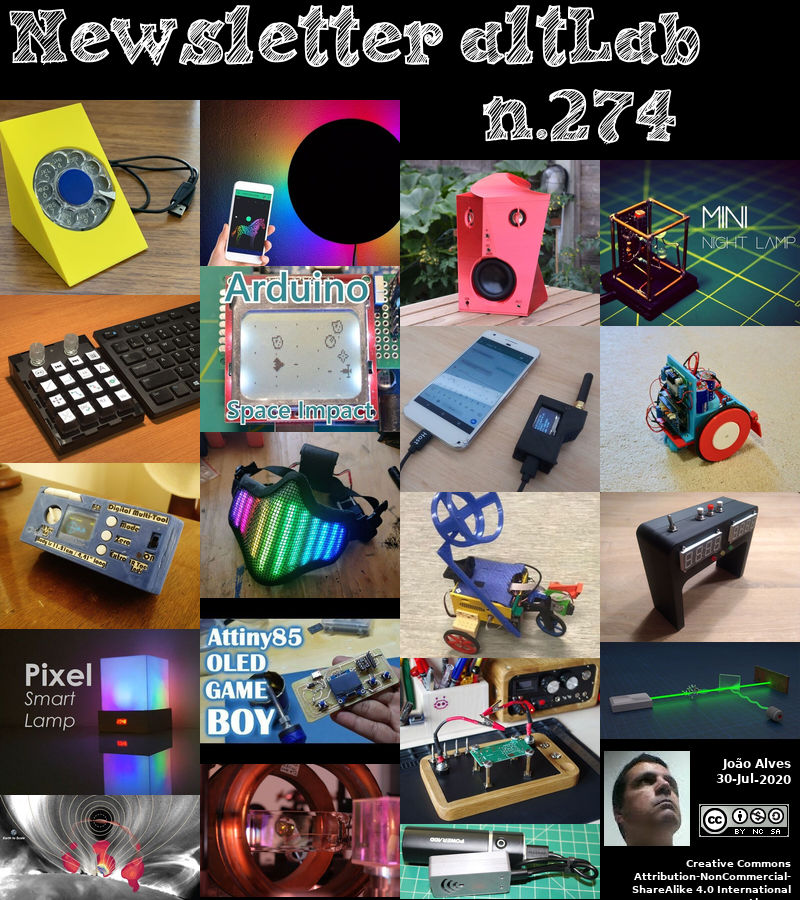2020-07-30 - Nº 274
Editorial
Esta é a Newsletter Nº 274 que se apresenta com o mesmo formato que as anteriores. Se gostar da Newsletter partilhe-a!
Todas as Newsletters encontram-se indexadas no link.
Esta Newsletter tem os seguintes tópicos:
Faz anos hoje que nascia, em 1863, o inventor e fabricante automovel americano Henry Ford. Ele foi o primeiro a experimentar motores de combustão interna enquanto era engenheiro da Edison Illuminating Company. Ele finalizou o primeiro motor a gasolina utilizável a 24 de Dezembro de 1893. O quadriciclo que ele projectou, fez o seu primeiro teste de estrada a 4 de Junho de 1896. Em 16 de Junho de 1903, ele e onze investidores assinaram documentos para criar a Ford Motor Company. A 1 de Outubro de 1908, Ford introduziu o Modelo T confiável e de baixo custo, enquanto continuava a revolucionar a indústria. A Ford introduziu peças fabricadas com precisão projectadas para serem peças padronizadas e trocáveis. Em 1 de Dezembro de 1913, a produção foi aumentada usando uma linha de montagem em movimento contínuo. Em 1918, metade de todos os carros na América eram do modelo T. O último modelo T saiu da linha de montagem em 26 de maio de 1927.
Faz também anos hoje que nascia, em 1888, o físico e engenheiro electrotécnico russo-americano Vladimir K. Zworykin. Ele ficou conhecido como o "o pai da televisão". Simultaneamente ao início das transmissões de rádio, Zworykin estava a desenvolver um sistema de transmissão de som e imagem. Outros inventores estavam usando um sistema motorizado de varredura mecânica com discos rotativos capazes de fotografar uma polegada quadrada. Era pesado, volumoso e pouco prático para uso doméstico. Zworykin, na Westinghouse, desenvolveu um sistema de televisão digital usando as suas inovações, o iconoscópio e o cinescópio, os precursores da câmara de televisão actual. Ele também inventou o microscópio electrónico.
Por fim, faz hoje anos que nascia, em 1940, e empresário e inventor inglês Clive Sinclair. Ele fundou a Sinclair Radionics em 1961, onde produziu a primeira calculadora eletrônica de bolso em 1972 (Sinclair Executive). Mais tarde, a Sinclair entrou na produção de computadores domésticos e produziu o Sinclair ZX80, o primeiro computador doméstico de mercado de massas do Reino Unido por menos de £ 100 e, posteriormente, com a Sinclair Research, o ZX81 e o ZX Spectrum; o último é amplamente reconhecido pelos consumidores e programadores pela sua importância nos primeiros dias da indústria britânica de computadores domésticos. Ficou também conhecido por ter criado um veiculo electrico com baterias - o Sinclair C5. Embora tenha sido um fracasso comercial foi dos primeiros veículos eléctricos a serem comercializados para o publico. Tinha autonomia de 32Km, pesava 45Kg e tinha uma velocidade máxima de 24 km/h. Foi lançado em 1985 e apenas foram produzidas 14.000 unidades.
Nesta semana que passou a NASA lançou a missão Marte 2020 - Perseverance Rover. A missão transportará o veiculo Perseverance até Marte, e aterrará o mesmo na cratera Jezero daqui a cerca de sete meses a 18 de Fevereiro de 2021. O veiculo tem acoplado o helicóptero Ingenuity com o qual tentarão fazer uma serie de experiências relacionadas com o voo de veículos noutros planetas. Aparentemente pouco tempo após a descolagem do foguetão ULA Atlas V's Centaur foi recebido um sinal de telemetria nas estações terrestres com dados a indicar que a nave espacial tinha entrado num estado conhecido como modo de segurança. Muito provavelmente isto sucedeu porque ao entrar na sombra da Terra a temperatura encontrava-se abaixo do esperado. Tendo todos os parâmetros voltado ao normal a equipa da missão está a fazer um diagnostico completo ao foguetão para que possa coloca-lo novamente no seu modo normal.
Na Newsletter desta semana apresentamos diversas noticias, artigos científicos assim como projetos de maker. É apresentada a revista MagPI Nº 93 de Agosto assim como a revista newelectronics de 8 de Julho. São apresentados os livros How to Code in Python 3 e Python Machine Learning Projects.
 João Alves ([email protected])
João Alves ([email protected])
O conteúdo da Newsletter encontra-se sob a licença  Creative Commons Attribution-NonCommercial-ShareAlike 4.0 International License.
Creative Commons Attribution-NonCommercial-ShareAlike 4.0 International License.
Novidades da Semana

NASA, ULA Launch Mars 2020 Perseverance Rover Mission to Red Planet
"The agency's Mars 2020 mission is on its way. It will land at Jezero Crater in about seven months, on Feb. 18, 2021. NASA's Mars 2020 Perseverance rover mission is on its way to the Red Planet to search for signs of ancient life and collect samples to send back to Earth. Humanity's most sophisticated rover launched with the Ingenuity Mars Helicopter at 7:50 a.m. EDT (4:50 a.m. PDT) Friday on a United Launch Alliance (ULA) Atlas V rocket from Space Launch Complex 41 at Cape Canaveral Air Force Station in Florida. "With the launch of Perseverance, we begin another historic mission of exploration," said NASA Administrator Jim Bridenstine. "This amazing explorer's journey has already required the very best from all of us to get it to launch through these challenging times." [...]
Outras Notícias

Announcing the Grace Hopper subsea cable, linking the U.S., U.K. and Spain
"Today, 98% of international internet traffic is ferried around the world by subsea cables. A vast underwater network of cables crisscrossing the ocean makes it possible to share, search, send, and receive information around the world at the speed of light. In today’s day and age, as the ways that we work, play and connect are becoming increasingly digital, reliable connectivity is more important than ever before. That’s why we’re excited to announce a new subsea cable—Grace Hopper—which will run between the United States, the United Kingdom and Spain, providing better resilience for the network that underpins Google’s consumer and enterprise products. Grace Hopper joins our other private subsea cables, Curie, Dunant and Equiano to connect far-flung continents along the ocean floor. Private subsea cables allow us to plan effectively for the future capacity needs of our customers and users around the world, and add a layer of security beyond what’s available over the public internet." [...]

Microsoft tests hydrogen fuel cells for backup power at datacenters
"In a worldwide first that could jumpstart a long-forecast clean energy economy built around the most abundant element in the universe, hydrogen fuel cells have powered a row of datacenter servers for 48 consecutive hours, Microsoft announced Monday. The feat is the latest milestone in the company’s commitment to be carbon negative by 2030. To help achieve that goal and accelerate the global transition away from fossil fuels, Microsoft is also aiming to eliminate its dependency on diesel fuel by 2030. Diesel fuel accounts for less than 1% of Microsoft’s overall emissions. Its use is primarily confined to Azure datacenters, where, like at most cloud providers around the world, diesel-powered generators support continuous operations in the event of power outages and other service disruptions. “They are expensive." [...]

Airbus to build 'first interplanetary cargo ship'
"Airbus-France will build the huge satellite that brings the first Martian rock samples back to Earth. This material will be drilled on the Red Planet by the US space agency's next rover, Perseverance, before being blasted into orbit by a rocket. It'll be the Airbus satellite's job to grab the packaged samples and then ship them home. The joint American-European project is expected to cost billions and take just over a decade to implement. But scientists say it's probably the best way to confirm whether life has ever existed on the Red Planet. Any evidence is likely to be controversial and will need the powerful analytical tools only found in Earth laboratories to convince the doubters, the researchers argue." [...]

Virgin Galactic Reveals SpaceshipTwo Cabin Interior
"Virgin Galactic Holdings, Inc. (NYSE: SPCE) (“Virgin Galactic” or “the Company”), a vertically integrated aerospace and space travel company, today revealed the cabin interior of its first SpaceshipTwo vehicle, VSS Unity in a virtual event streamed live on YouTube. Aspiring astronauts and space enthusiasts around the world, now have the opportunity to explore the Virgin Galactic cabin design and spaceflight experience through an augmented reality enabled mobile app, which launches after the live event, and is available to download for free at both the App Store and Play Store. One of the defining hallmarks of the Virgin brand over 50 years, has been the use of inspired and bold design to transform the customer experience. It’s an ethos that has been successfully applied across industrial sectors and design disciplines: from aircraft cabins and hotel bedrooms to fitness classes and personal banking. Virgin Galactic, in collaboration with London design agency, Seymourpowell, has striven to remain faithful to that tradition by developing an elegant but progressive, experience-focused concept for the cabin of its spaceship. While it has been created to integrate seamlessly with every other aspect of the Virgin Galactic astronaut journey – the cabin is also the design centrepiece; providing safety without distraction, quietly absorbing periods of sensory intensity and offering each astronaut a level of intimacy required for personal discovery and transformation." [...]
Ciência e Tecnologia
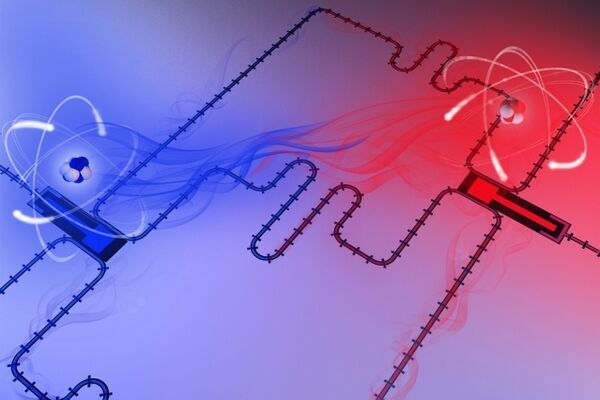
“Giant atoms” enable quantum processing and communication in one
"Researchers devise an on-off system that allows high-fidelity operations and interconnection between processors. MIT researchers have introduced a quantum computing architecture thatcan perform low-error quantum computations while also rapidly sharing quantum information between processors. The work represents a key advance toward a complete quantum computing platform. Previous to this discovery, small-scale quantum processors have successfully performed tasks at a rate exponentially faster than that of classical computers. However, it has been difficult to controllably communicate quantum information between distant parts of a processor. In classical computers, wired interconnects are used to route information back and forth throughout a processor during the course of a computation." [...]

Faster LEDs for Wireless Communications from Invisible Light
"Researchers have solved a major problem for optical wireless communications - the process by which light carries information between cell phones and other devices. Light-emitting diodes (LEDs) pulse their light in a coded message that recipient devices can understand. Now, a team of researchers based in Japan has married the two options into the ideal combination of long lasting and fast LEDs. They published their results on July 22 in Applied Physics Letters. "A key technology for faster modulation is to decrease the device si earch for Advanced Materials at Tohoku University. "However, this tactic creates a dilemma: although smaller LEDs can be modulated faster, they have lower power."" [...]
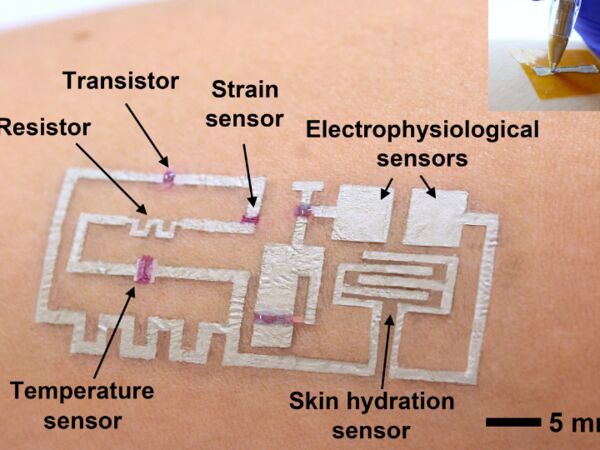
‘Drawn-on-Skin’ Electronics Offer Breakthrough in Wearable Monitors
"A team of researchers led by Cunjiang Yu, Bill D. Cook Associate Professor of Mechanical Engineering at the University of Houston, has developed a new form of electronics known as “drawn-on-skin electronics,” allowing multifunctional sensors and circuits to be drawn on the skin with an ink pen. The advance, the researchers report in Nature Communications, allows for the collection of more precise, motion artifact-free health data, solving the long-standing problem of collecting precise biological data through a wearable device when the subject is in motion. The imprecision may not be important when your FitBit registers 4,000 steps instead of 4,200, but sensors designed to check heart function, temperature and other physical signals must be accurate if they are to be used for diagnostics and treatment. The drawn-on-skin electronics are able to seamlessly collect data, regardless of the wearer’s movements. They also offer other advantages, including simple fabrication techniques that don’t require dedicated equipment. “It is applied like you would use a pen to write on a piece of paper,” said Yu." [...]
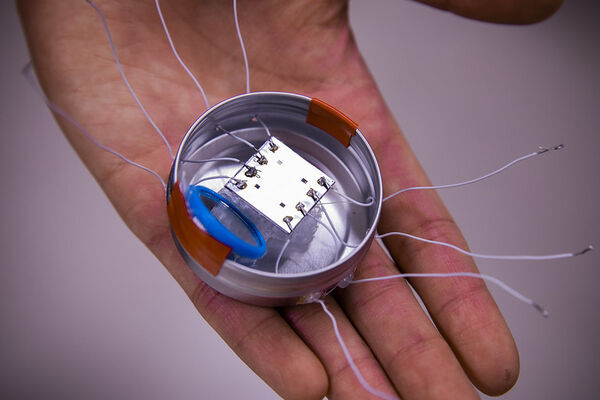
Origami microbots: Centuries-old artform guides cutting-edge advances in tiny machines
"University of Michigan engineers create centimeter-sized robots capable of more than ever before Origami principles can unlock the potential of the smallest robots, enhancing speed, agility and control in machines no more than a centimeter in size. University of Michigan researchers have demonstrated that behavioral rules underpinning the Japanese art of folding can expand the capabilities of these machines, creating potential for greater use in fields as diverse as medical equipment and infrastructure sensing. “We’ve come up with a new way to design, fabricate and actuate microbots,” said Evgueni Filipov, U-M assistant professor of civil and environmental engineering. “We’ve been the first to bring advanced origami folding capabilities into one integrated microbot system.” Their bots can form one shape, complete a task, then reconfigure into a second shape for an additional task, and so on. The latest research from the team, which includes Kenn Oldham, a U-M professor of mechanical engineering, Ph.D. student Yi Zhu and graduate research assistant Mayur Birla, appears in Advanced Functional Materials. To date, most microbots have limited movements, which hampers their ability to perform useful tasks." [...]

Johns Hopkins astrophysicists observe long-theorized quantum phenomena
"A team led by students probes the mass-radius relation of white dwarf stars, observing in their data evidence of quantum mechanics and Einstein's theory of general relativity At the heart of every white dwarf star—the dense stellar object that remains after a star has burned away its fuel reserve of gases as it nears the end of its life cycle—lies a quantum conundrum: as white dwarfs add mass, they shrink in size, until they become so small and tightly compacted that they cannot sustain themselves, collapsing into a neutron star. This puzzling relationship between a white dwarf's mass and size, called the mass-radius relation, was first theorized by Nobel Prize-winning astrophysicist Subrahmanyan Chandrasekhar in the 1930s. Now, a team of Johns Hopkins astrophysicists has developed a method to observe the phenomenon itself using astronomical data collected by the Sloan Digital Sky Survey and a recent dataset released by the Gaia Space Observatory. The combined datasets provided more than 3,000 white dwarfs for the team to study. A report of their findings, led by Hopkins senior Vedant Chandra, is now in press in Astrophysical Journal and available online on arXiv. "The mass-radius relation is a spectacular combination of quantum mechanics and gravity, but it's counterintuitive for us—we think that as an object gains mass, it should get bigger," says Nadia Zakamska, an associate professor in the Department of Physics and Astronomy who supervised the student researchers." [...]
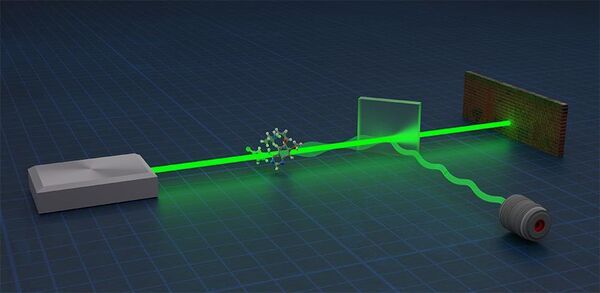
‘Quantum negativity’ can power ultra-precise measurements
"Scientists have found that a physical property called ‘quantum negativity’ can be used to take more precise measurements of everything from molecular distances to gravitational waves. The researchers, from the University of Cambridge, Harvard and MIT, have shown that quantum particles can carry an unlimited amount of information about things they have interacted with. The results, reported in the journal Nature Communications, could enable far more precise measurements and power new technologies, such as super-precise microscopes and quantum computers. Metrology is the science of estimations and measurements. If you weighed yourself this morning, you’ve done metrology. In the same way as quantum computing is expected to revolutionise the way complicated calculations are done, quantum metrology, using the strange behaviour of subatomic particles, may revolutionise the way we measure things." [...]

Soft robot actuators heal themselves
"Repeated activity wears on soft robotic actuators, but these machines' moving parts need to be reliable and easily fixed. Now a team of researchers has a biosynthetic polymer, patterned after squid ring teeth, that is self-healing and biodegradable, creating a material not only good for actuators, but also for hazmat suits and other applications where tiny holes could cause a danger. "Current self-healing materials have shortcomings that limit their practical application, such as low healing strength and long healing times (hours)," the researchers report in today's (July 27) issue of Nature Materials. The researchers produced high-strength synthetic proteins that mimic those found in nature. Like the creatures they are patterned on, the proteins can self-heal both minute and visible damage. "Our goal is to create self-healing programmable materials with unprecedented control over their physical properties using synthetic biology," said Melik Demirel, professor of engineering science and mechanics and holder of the Lloyd and Dorothy Foehr Huck Chair in Biomimetic Materials." [...]
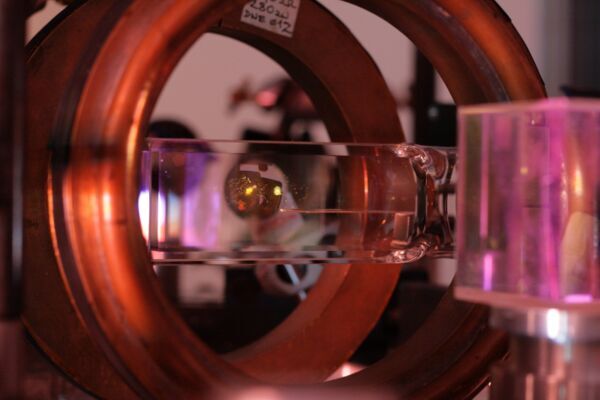
Scientists make quantum technology smaller
"A way of shrinking the devices used in quantum sensing systems has been developed by researchers at the UK Quantum Technology Hub Sensors and Timing, which is led by the University of Birmingham. Sensing devices have a huge number of industrial uses, from carrying out ground surveys to monitoring volcanoes. Scientists working on ways to improve the capabilities of these sensors are now using quantum technologies, based on cold atoms, to improve their sensitivity. Machines developed in laboratories using quantum technology, however, are cumbersome and difficult to transport, making current designs unsuitable for most industrial uses. The team of researchers has used a new approach that will enable quantum sensors to shrink to a fraction of their current size. The research was conducted by an international team led by University of Birmingham and SUSTech in China in collaboration with Paderborn University in Germany." [...]
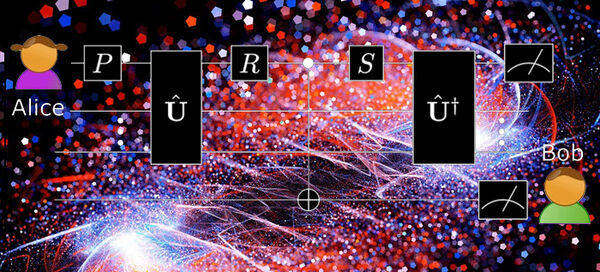
Simulating quantum ‘time travel’ disproves butterfly effect in quantum realm
"Using a quantum computer to simulate time travel, researchers have demonstrated that, in the quantum realm, there is no “butterfly effect.” In the research, information—qubits, or quantum bits—“time travel” into the simulated past. One of them is then strongly damaged, like stepping on a butterfly, metaphorically speaking. Surprisingly, when all qubits return to the “present,” they appear largely unaltered, as if reality is self-healing. “On a quantum computer, there is no problem simulating opposite-in-time evolution, or simulating running a process backwards into the past,” said Nikolai Sinitsyn, a theoretical physicist at Los Alamos National Laboratory and coauthor of the paper with Bin Yan, a post doc in the Center for Nonlinear Studies, also at Los Alamos. “So we can actually see what happens with a complex quantum world if we travel back in time, add small damage, and return. We found that our world survives, which means there’s no butterfly effect in quantum mechanics.” In Ray Bradbury’s 1952 science fiction story, “A Sound of Thunder,” a character used a time machine to travel to the deep past, where he stepped on a butterfly." [...]

Quantum machines learn “quantum data”
"Skoltech scientists have shown that quantum enhanced machine learning can be used on quantum (as opposed to classical) data, overcoming a significant slowdown common to these applications and opening a “fertile ground to develop computational insights into quantum systems”. The paper was published in the journal Physical Review A. Quantum computers utilize quantum mechanical effects to store and manipulate information. While quantum effects are often claimed to be counterintuitive, such effects will enable quantum enhanced calculations to dramatically outperform the best supercomputers. In 2019, the world saw a prototype of this demonstrated by Google as quantum computational superiority. The standard approach to quantum enhanced machine learning has been to apply quantum algorithms to classical data. In other words, classical data (represented by bit strings of 1’s and 0’s) must be stored or otherwise represented by a quantum processor before quantum effects can be utilized." [...]
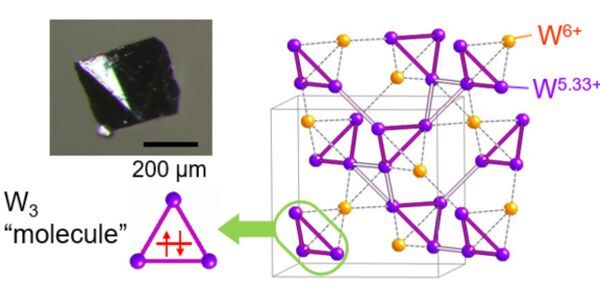
Unusual electron sharing found in cool crystal
"Tungsten atoms are seen to come together in a way that is similar to an outer space ion. The finding suggests many more types of electron sharing between atoms could exist in nature. A team of scientists led by Nagoya University in Japan has detected a highly unusual atomic configuration in a tungsten-based material. Until now, the atomic configuration had only been seen in trihydrogen, an ion that exists in between star systems in space. The findings, published in the journal Nature Communications, suggest further studies could reveal compounds with interesting electronic properties. Atoms that make up humans and trees and kitchen tables generally bond together by sharing electrons - think of electrons as the atomic glue of life." [...]
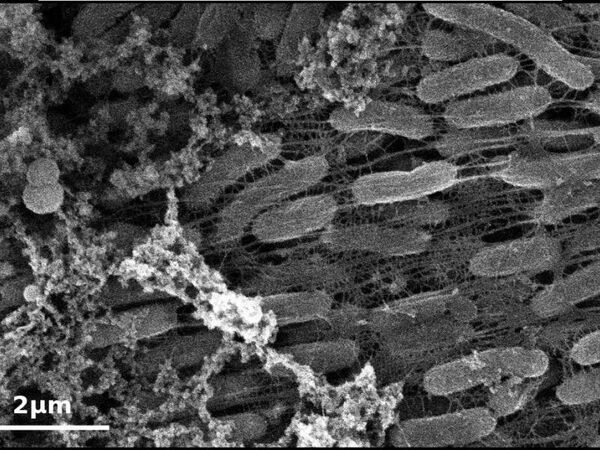
Metal-Breathing Bacteria Could Transform Electronics, Biosensors, and More
"When the Shewanella oneidensis bacterium “breathes” in certain metal and sulfur compounds anaerobically, the way an aerobic organism would process oxygen, it produces materials that could be used to enhance electronics, electrochemical energy storage, and drug-delivery devices. The ability of this bacterium to produce molybdenum disulfide — a material that is able to transfer electrons easily, like graphene — is the focus of research published in Biointerphases by a team of engineers from Rensselaer Polytechnic Institute. “This has some serious potential if we can understand this process and control aspects of how the bacteria are making these and other materials,” said Shayla Sawyer, an associate professor of electrical, computer, and systems engineering at Rensselaer. The research was led by James Rees, who is currently a postdoctoral research associate under the Sawyer group in close partnership and with the support of the Jefferson Project at Lake George — a collaboration between Rensselaer, IBM Research, and The FUND for Lake George that is pioneering a new model for environmental monitoring and prediction. This research is an important step toward developing a new generation of nutrient sensors that can be deployed on lakes and other water bodies. “We find bacteria that are adapted to specific geochemical or biochemical environments can create, in some cases, very interesting and novel materials,” Rees said." [...]

Mapping crystal shapes could fast-track 2D materials
"Experts call for global effort to clear hurdles to mass production Materials scientists at Rice University and the University of Pennsylvania are calling for a collective, global effort to fast-track the mass production of 2D materials like graphene and molybdenum disulfide. In a perspective article published online in Materials Today, journal editor-in-chief Jun Lou and colleagues make a case for a focused, collective effort to address the research challenges that could clear the way for large-scale mass production of 2D materials. Lou and fellow Rice materials scientists Ming Tang, Jing Zhang and Fan Wang joined Penn’s Vivek Shenoy in describing the potential transformation in 2D materials technology that could result from a systematic, communitywide effort to map the shapes of the 2D crystals that are being grown in labs worldwide via a process known as chemical vapor deposition (CVD). “Like snowflakes in nature, 2D crystals exhibit a rich variety of morphologies under different growth conditions,” they wrote. Mapping these unique crystal patterns and compiling the maps in a global database, alongside the recipes for creating each pattern, could unlock a wealth of information “for understanding, diagnosing and controlling the CVD process and environment for 2D material growth,” the researchers wrote. CVD is a commonly used process for creating thin films, including commercially important materials in the semiconductor industry." [...]

Randomness theory could hold key to internet security
"Is there an unbreakable code? The question has been central to cryptography for thousands of years, and lies at the heart of efforts to secure private information on the internet. In a new paper, Cornell Tech researchers identified a problem that holds the key to whether all encryption can be broken – as well as a surprising connection to a mathematical concept that aims to define and measure randomness. “Our result not only shows that cryptography has a natural ‘mother’ problem, it also shows a deep connection between two quite separate areas of mathematics and computer science – cryptography and algorithmic information theory,” said Rafael Pass, professor of computer science at Cornell Tech. Pass is co-author of “On One-Way Functions and Kolmogorov Complexity,” which will be presented at the IEEE Symposium on Foundations of Computer Science, to be held Nov. 16-19 in Durham, North Carolina. “The result,” he said, “is that a natural computational problem introduced in the 1960s in the Soviet Union characterizes the feasibility of basic cryptography – private-key encryption, digital signatures and authentication, for example.” For millennia, cryptography was considered a cycle: Someone invented a code, the code was effective until someone eventually broke it, and the code became ineffective." [...]

Looking into the black box
"Deep learning systems are revolutionizing technology around us, from voice recognition that pairs you with your phone to autonomous vehicles that are increasingly able to see and recognize obstacles ahead. But much of this success involves trial and error when it comes to the deep learning networks themselves. A group of MIT researchers recently reviewed their contributions to a better theoretical understanding of deep learning networks, providing direction for the field moving forward. “Deep learning was in some ways an accidental discovery,” explains Tommy Poggio, investigator at the McGovern Institute for Brain Research, director of the Center for Brains, Minds, and Machines (CBMM), and the Eugene McDermott Professor in Brain and Cognitive Sciences. “We still do not understand why it works. A theoretical framework is taking form, and I believe that we are now close to a satisfactory theory." [...]

Researchers Offer Unprecedented Look Into 'Central Engine' Powering a Solar Flare
"In a study published in Nature Astronomy, an international team of researchers has presented a new, detailed look inside the “central engine” of a large solar flare accompanied by a powerful eruption first captured on Sept. 10, 2017 by the Owens Valley Solar Array (EOVSA) — a solar radio telescope facility operated by New Jersey Institute of Technology’s (NJIT) Center for Solar-Terrestrial Research (CSTR). The new findings, based on EOVSA’s observations of the event at microwave wavelengths, offer the first measurements characterizing the magnetic fields and particles at the heart of the explosion. The results have revealed an enormous electric current “sheet” stretching more than 40,000 kilometers through the core flaring region where opposing magnetic field lines approach each other, break and reconnect, generating the intense energy powering the flare. Notably, the team’s measurements also indicate a magnetic bottle-like structure located at the top of the flare’s loop-shaped base (known as the flare arcade) at a height of nearly 20,000 kilometers above the Sun’s surface. The structure, the team suggests, is likely the primary site where the flare’s highly energetic electrons are trapped and accelerated to nearly the speed of light. Researchers say the study’s new insight into the central engine that drives such powerful eruptions may aid future space weather predictions for potentially catastrophic energy releases from solar flares — the solar system’s most powerful explosions, capable of severely disrupting technologies on Earth such as satellite operations, GPS navigation and communication systems, among many others." [...]
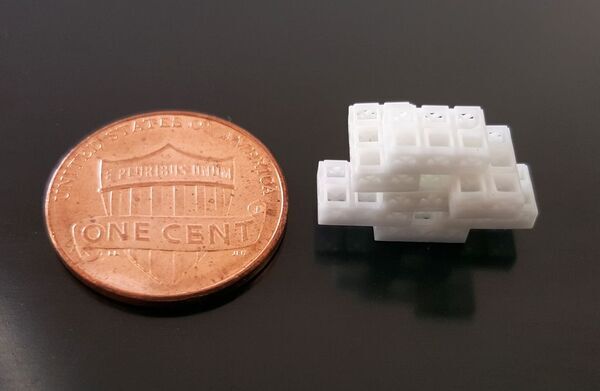
Lego-inspired bone and soft tissue repair with tiny, 3D-printed bricks
"Flea-sized, hollow blocks can be filled with materials that improve healing Tiny, 3D-printed bricks have been designed to heal broken bones - and could one day lead to lab-made organs for human transplant. Inspired by Lego blocks, the small, hollow bricks serve as scaffolding onto which both hard and soft tissue can regrow better than today’s standard regeneration methods, according to new research published in Advanced Materials. Each brick is 1.5 millimeters cubed, or roughly the size of a small flea. “Our patent-pending scaffolding is easy to use; it can be stacked together like Legos and placed in thousands of different configurations to match the complexity and size of almost any situation,” said Luiz Bertassoni, Ph.D., who led the technology’s development and is an associate professor in the OHSU School of Dentistry and an associate professor of biomedical engineering in the OHSU School of Medicine. Bertassoni partnered with colleagues from OHSU, University of Oregon, New York University and Mahidol University in Thailand to develop and evaluate the technology. When stacked together, the microcages are designed to repair broken bones better than today’s methods." [...]
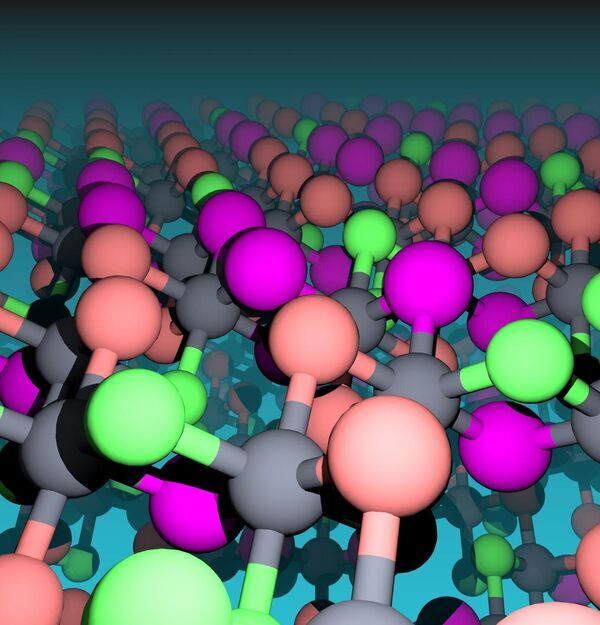
A new spin on magnetism
"A new approach developed by Boston College physics researchrs creates synthetic layered magnets with a unprecedented level of control over their magnetic properties The magnetic properties of a chromium halide can be tuned by manipulating the non-magnetic atoms in the material, a team, led by Boston College researchers, reports in the most recent edition of ScienceAdvances. The seemingly counter-intuitive method is based on a mechanism known as an indirect exchange interaction, according to Boston College Assistant Professor of Physics Fazel Tafti, a lead author of the report. An indirect interaction is mediated between two magnetic atoms via a non-magnetic atom known as the ligand. The Tafti Lab findings show that by changing the composition of these ligand atoms, all the magnetic properties can be easily tuned. “We addressed a fundamental question: is it possible to control the magnetic properties of a material by changing the non-magnetic elements?” said Tafti. “This idea and the methodology we report on are unprecedented." [...]

Magnetic Memory States Go Exponential
"A newly-discovered ability to stabilize and control exponential number of discrete magnetic states in a relatively simple structure may pave the way to multi-level magnetic memory with extremely large number of states per cell. Spintronics is a thriving branch of nano-electronics which utilizes the spin of the electron and its associated magnetic moment in addition to the electron charge used in traditional electronics. The main current practical contributions of spintronics are in magnetic sensing and non-volatile magnetic data storage, and additional breakthroughs in developing magnetic based processing and novel types of magnetic memory are expected. Spintronics devices commonly consist of magnetic elements manipulated by spin-polarized currents between stable magnetic states. When spintronic devices are used for storing data, the number of stable states sets an upper limit on memory capacity. While current commercial magnetic memory cells have two stable magnetic states corresponding to two memory states, there are clear advantages to increasing this number, as it will potentially allow increasing the memory density and enable the design of novel types of memory." [...]
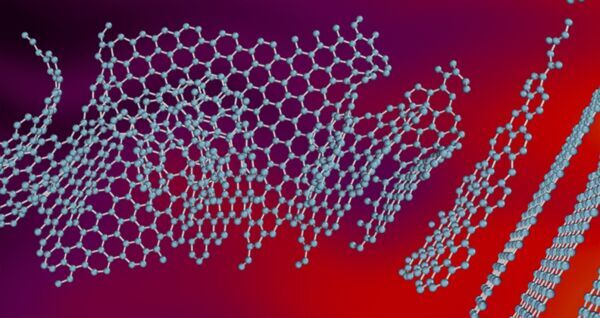
Serendipity broadens the scope for making graphite
"Curtin University researchers have unexpectedly discovered a new way to make crystalline graphite, an essential material used in the making of lithium ion batteries. Described in a research paper published today in Nature’s Communications Materials, the new technique does not require the typical metal catalysts or special raw materials to turn carbon into crystalline graphite. Interestingly it was instead discovered by a research student in a lab, using an Atomic Absorption Spectrometer (AAS) – a piece of equipment, invented in Australia in the 1950s and developed to analyse the composition of liquids. The Master-level student behind the discovery, Mr Jason Fogg, said that while the exact science behind why this new technique works is still to be confirmed, he believes it relates to the specific way the AAS heats the samples through short fast pulses. “We used a special furnace that can heat the sample to 3000 degrees Celsius in seconds, something most furnaces cannot achieve,” Mr Fogg said. “To put the temperature into perspective, 3000 degrees Celsius is equal to about half the surface temperature of the Sun.” Dr Irene Suarez-Martinez, from Curtin’s School of Electrical Engineering, Computing and Mathematical Sciences, said that while graphite is the most stable form of carbon, most carbon materials stubbornly refuse to turn into graphite, which is why she was absolutely shocked to learn about Mr Fogg’s results." [...]

Room temperature superconductivity creeping toward possibility
"The possibility of achieving room temperature superconductivity took a tiny step forward with a recent discovery by a team of Penn State physicists and materials scientists. The surprising discovery involved layering a two-dimensional material called molybdenum sulfide with another material called molybdenum carbide. Molybdenum carbide is a known superconductor — electrons can flow through the material without any resistance. Even the best of metals, such as silver or copper, lose energy through heat. This loss makes long-distance transmission of electricity more costly. “Superconductivity occurs at very low temperatures, close to absolute zero or 0 Kelvin,” said Mauricio Terrones, corresponding author on a paper in Proceedings of the National Academy of Sciences published this week." [...]
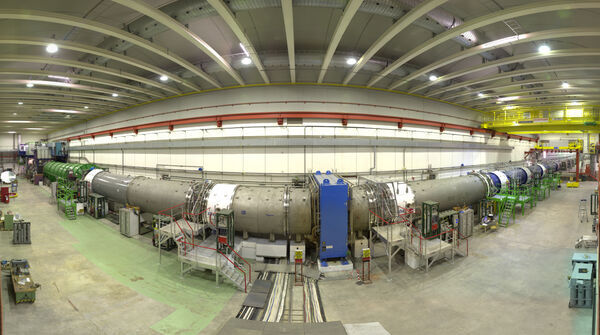
NA62 experiment at CERN reports first evidence for ultra-rare process that could lead to new physics
"Scientists at CERN have reported on their first significant evidence for a process predicted by theory, paving the way for searches for evidence of new physics in particle processes that could explain dark matter and other mysteries of the universe. Today the CERN NA62 collaboration, which is part-funded by the UK’s Science and Technology Facilities Council (STFC) and involves a number of UK scientists, presented at the ICHEP 2020 conference in Prague the first significant experimental evidence for the ultra-rare decay of the charged kaon into a charged pion and two neutrinos, (i.e. K+ →ℼ+νν). The decay process is important in cutting-edge physics research because it is so sensitive to deviations from theoretical predictions. This means that it is one of the most interesting things to observe for physicists looking for evidence to support alternative theoretical model in particle physics. Professor Mark Thomson, particle physicist and Executive Chair of STFC, said that this was exciting progress because the result shows how precise measurements of this process could lead to new physics, beyond the Standard Model of particle physics developed in the 1970s: “The Standard Model describes the fundamental forces and building blocks of the universe." [...]
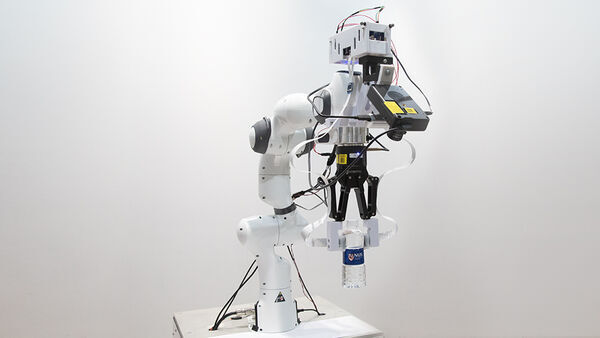
Intelligent sensing abilities for robots to carry out complex tasks
"Picking up a can of soft drink may be a simple task for humans, but this is a complex task for robots - it has to locate the object, deduce its shape, determine the right amount of strength to use, and grasp the object without letting it slip. Most of today’s robots operate solely based on visual processing, which limits their capabilities. In order to perform more complex tasks, robots have to be equipped with an exceptional sense of touch and the ability to process sensory information quickly and intelligently. A team of computer scientists and materials engineers from NUS has recently demonstrated an exciting approach to make robots smarter. They developed a sensory integrated artificial brain system that mimics biological neural networks, which can run on a power-efficient neuromorphic processor, such as Intel’s Loihi chip. This novel system integrates artificial skin and vision sensors, equipping robots with the ability to draw accurate conclusions about the objects they are grasping based on the data captured by the vision and touch sensors in real-time." [...]
Documentação
A documentação é parte essencial do processo de aprendizagem e a Internet além de artigos interessantes de explorar também tem alguma documentação em formato PDF interessante de ler. Todos os links aqui apresentados são para conteúdo disponibilizado livremente pelo editor do livro.
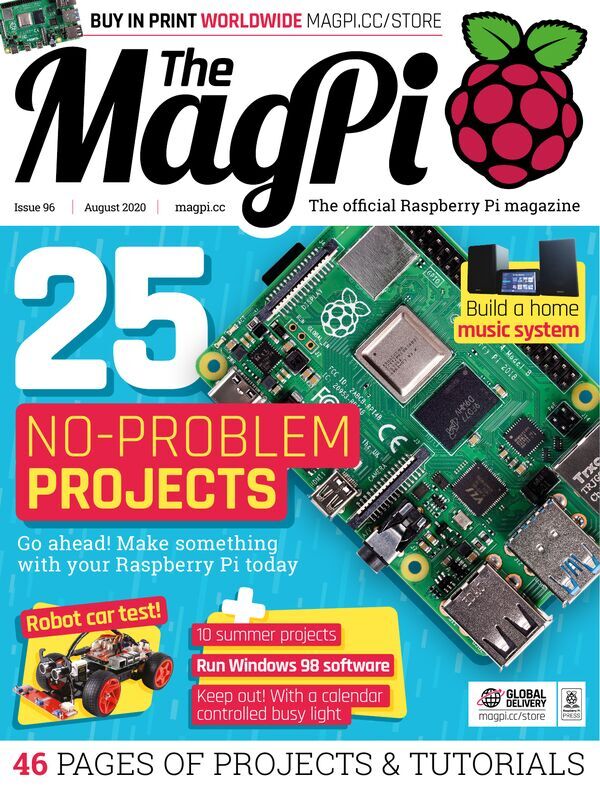
The MagPI 96
"Eager to put your Raspberry Pi to use, but stuck for ideas and think it’s all a bit complex? Our 25 no-nonsense projects will help you get started on a new build. Everything here is easy to make, and the results are impressive. Inside The MagPi magazine #96 25 No-problem projects. Put a new Raspberry Pi to good use with these inspiring, but do-able projects. Build the ultimate home music system." [...]
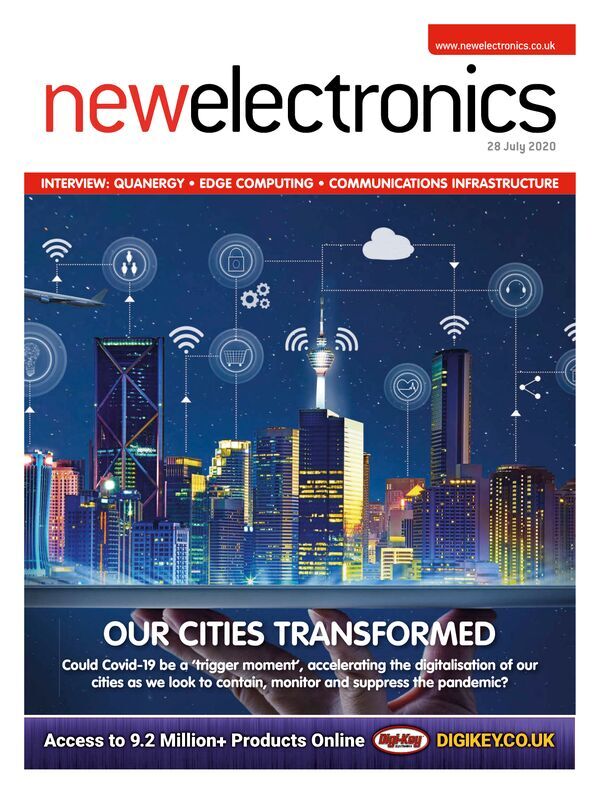
newelectronics 28 Julho 2020
"New Electronics is a fortnightly magazine focusing on technological innovation, news and the latest developments in the electronics sector. Downloadable as a digital page turner or pdf file, or offered as a hard copy, the New Electronics magazine is available in a format to suit you. " [...]
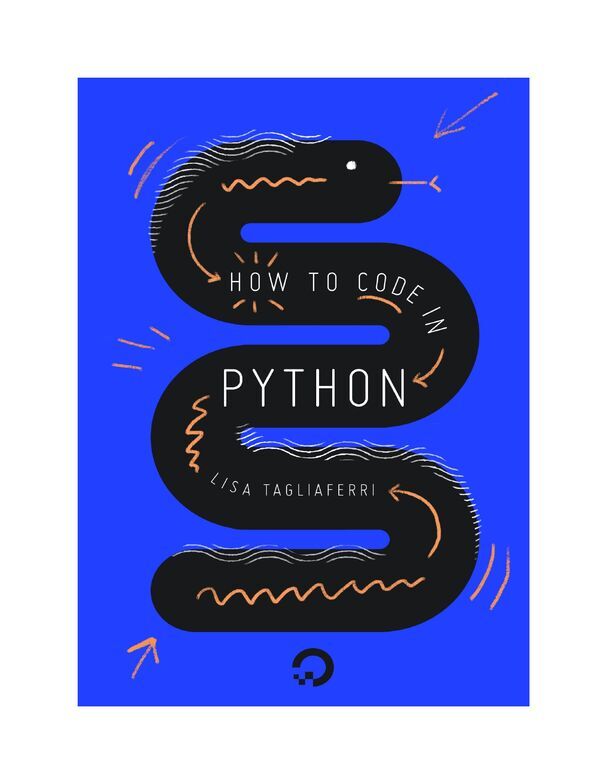
How To Code in Python 3
"An introduction to computer programming with Python 3. Helps the readers in learning the key concepts of Python and understanding how programs work while also imparting foundational logic that can serve the readers in other domains. " [...]

Python Machine Learning Projects
"This book of Python projects in machine learning tries to equip the developers of today and tomorrow with tools they can use to better understand, evaluate, and shape machine learning. " [...]
Projetos Maker
Diversos Projetos interessantes.
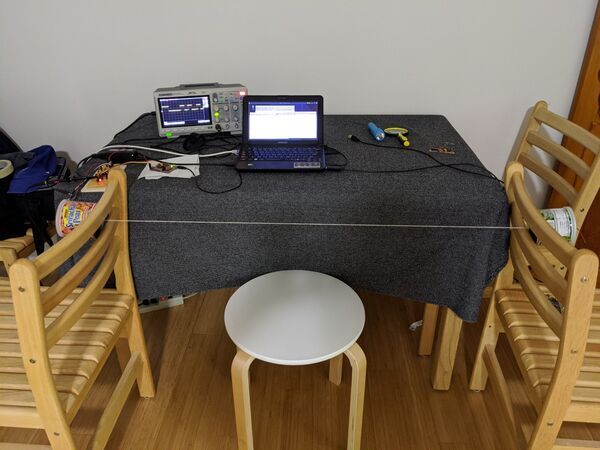
Tin Can Phone Modem
"Here's the popular "science experiment" of a phone made from tin cans and some kite string. This time instead of sending voice from one can to the other, data will be sent using a short beep for 0 and a long beep for 1 with a longer start beep to begin the transmission. A transmitter circuit on one end takes data from UART cable to a PC and relays the data through a speaker in one can. The receiver circuit has a microphone in the can and UART cable to relay the response back to the PC. This project was quite a bit more difficult than it looks. I'll have to admit my strength is software, not analog circuits." [...]
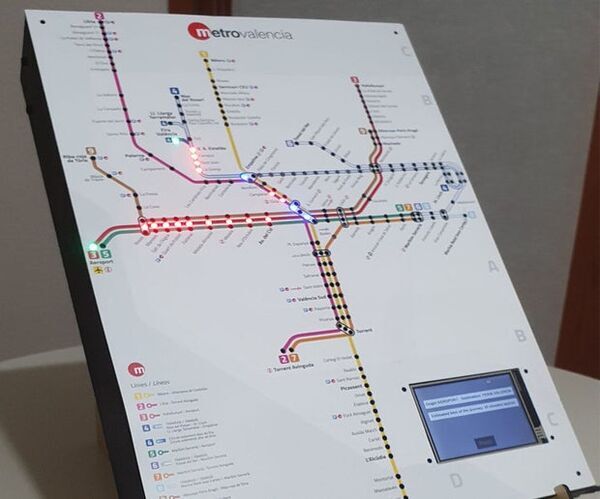
Interactive Subway Info Display With Voice Instructions. Demo
"I started designing the Display for The New York City Subway, then I changed to London City Subway... but hey! My city has a Subway too! So without more doubts I made it for my City Subway, Valencia (Spain). All the information contained in the project is real, obtained from the official website of Metro Valencia. I explain a Technique that can be extrapolated to any kind of routes map. This interactive panel let you set an Origin and a Destination and shows you all the Information to go from-to." [...]

Building a Digital Slot Car Lap Counter
"Having some Carrera Go slot car racing sets at home I always regarded the included analog lap counters as kind of boring. I wanted to build a better lap counter with more functionality and which makes playing with a Carrera Go racing set feel more like an actual race. For me the included lap counters are missing a basic feature: Tracking the lap time. The first idea was to use an ESP8266 and to make use of the WIFI capabilities (e.g. displaying lap times and speed on a website and having the possibliltity to make firmeware updates “over the air”). But after a second thought I came to the conclusion that it would also mean more complexitity and that the possiblity of OTA firmware updates would open the door to an never-ending project." [...]

The Ultimate Wireless Keyboard Mark 2
"This remote is actually just a wireless keyboard. You can, of course, buy these but this one is simpler. It doesn't have over 80 buttons, just 7 and they all serve a purpose. Here are some other features that make it far better: Fully customizable buttons Multiple layouts - Separate layout for each app. Can be changed with a button wireless reprogramming 1-year battery life rechargeable battery with USB-C port low battery indicator simple customization app open-source This whole project is just a solution to a minor inconvenience of watching youtube or movies on my PC. Trying to solve this problem I've tried several wireless keyboards but they are always big and often the button you need is behind a function key meaning you have to remember shortcuts and be looking at the keyboard when using it." [...]
Neopixel LED Face Mask
"Hi everyone, in this Instructable I'm going to show you how to make an animated face mask using WS2812b LEDs (Aka Neopixels). That description doesn't really do it justice, so go check out the video above! Please note that many of the animations use randomly chosen colors, so you'll get different effects each time. I thought this would be fun to wear around during the current pandemic while also helping to keep other people safe. The mask fully covers your mouth and nose and while remaining easy to breath through. Obviously it's not medically rated, but it should capture any moisture you exhale, and so should be safe to wear while out and about." [...]

Audio VU/Sound Level Meter with LM339
"This is an “Audio VU Meter” or “Sound Level Meter”, it is a general-purpose bar-graph Audio VU meter designed for fun projects. All you need is to hook up one wire to the output of the audio amplifier’s speaker pin along with GND and see the magic. The response of the circuit is very fast and it provides beautiful visual representation from audio input signal. A simplified schematic is provided to give the general idea of the operation. The signal is applied to a series of 20 comparators, each of them is biased to a different comparison level by the resistor string. In the circuit diagram, the resistor string is connected to the 100K potentiometer which provides reference voltage 1.9V to 12V." [...]
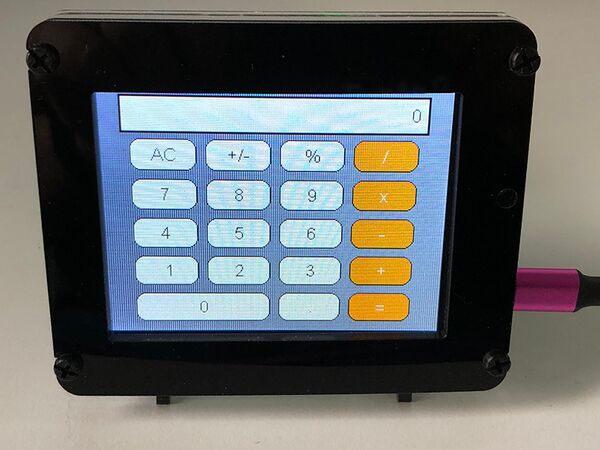
PyPortal Calculator using the Displayio UI Elements
"This guide explores some of the User Interface (UI) elements available through The CircuitPython displayio library by creating a basic calculator. CircuitPython will handle the actual calculations and the program concentrates on the input, output, and logic. This is split into two different files. One file will be the calculator class that handles all of the backend input and calculations and the other file will handle more of the front-end UI. For the calculator UI elements, we'll be using buttons, the label, and rectangle to create the calculator. To get the value of the button, we'll simply be reading the text that is displayed on the button." [...]

Dual Mono AK4493 DAC - MK II
"Time flies when you’re having fun. Or are just too busy with things, in general. It’s been two and a half years since I posted about my Dual Mono AK4490 DAC. That DAC has been built and is in use by at least 6 people, other than myself. All of them have been very satisfied with its performance. But since then quite some water has passed under the bridge." [...]
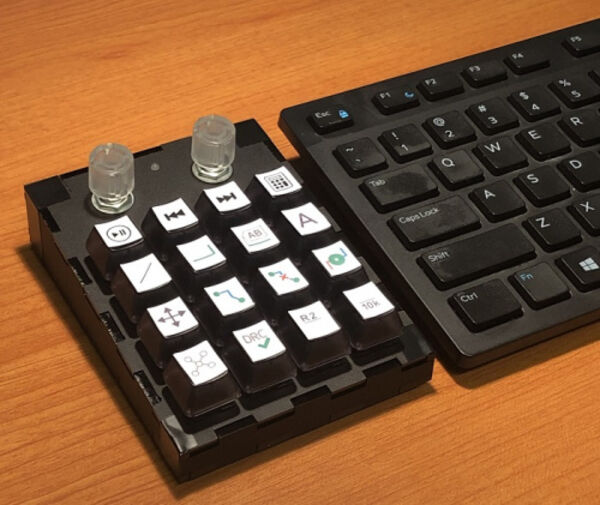
Cherry MX Wireless Keyboard
"The keyboard has a 4x4 matrix of cherry MX switches, which are connected to the SparkFun ESP32 Thing Plus. Each key can send either a keyboard or mouse command to the host computer thanks to the BLE HID Arduino Library. Rotary encoder support was provided by the Teensy Encoder Library. The software is currently configured as an Eagle shortcut keyboard, where each button corresponds to an Eagle command. The left rotary encoder controls the computer's volume, and the built in encoder switch for mute. The right encoder controls the grid spacing, and the encoder switch will toggle between imperial and metric units." [...]

atinybasic
"atinybasic is a straight-forward port of Dennis Allison's famous "Tiny BASIC" from "The People's Computer Company" newsletter circa September 1975. In the spirit of the original, atinybasic does not attempt to be a complete BASIC environment per se. Instead it's meant to be a starting point for building a BASIC suited for a particular project or task. I have added RND, ABS and an array to the basic feature set, but this is more to show how you might add more features than anything else. " [...]

Digital Multi-Tool
"Hi everyone. If you're like me you, probably have a bunch of spare sensors lying around either from incomplete projects, or that you bought on a whim for some reason or another. I was inspired by Patrick Panikulam's DIGITAL MULTI-FUNCTION MEASURING TOOL to take some of my spare sensors and combine them into a digital multi-tool. It's like a Swiss Army Knife, but for sensing. I mainly focused on incorporating sensors that I thought were useful in a workshop setting (length, angle, temperature, etc), although I did include an extra I2C port, and a few spare digital pins if you want to add a sensor of your own. Here are a list of the multi-tool's features / modes: Bubble style digital level with exact angle output Bullseye style digital level with exact angle output Digital protractor (like a drawing compass) with exact angle output Laser range-finder with max range of 3.5 meters Detachable measure marker for the Laser range-finder Rolling wheel style ruler Contact tachometer Non-Contact IR tachometer Non-Contact IR thermometer (Wide angle, not great for point sources) Laser Pointer Powered by rechargeable LiPo battery Solar panel for passive recharging Magnets for mounting / securing the multi-tool All combined into a 3D-printed, pocket-sized case, 4.4 "x 1.6" x 1.8" (11.2mm x 40.3mm x 46.8mm)." [...]

LoRa Mesh Radio
"This is a fairly simple add-on for mobile phones to enable SMS-like messaging in a group when outside cell coverage, or in disaster scenarios. It utilises Semtech LoRa radios, for low-power/long-range communications. There are a lot of hardware options, and I am still trying different devices and manufacturers, but for now this tutorial will show how to assemble and setup one of the following boards: TTGO ESP32 Lora with OLED Adafruit Feather M0 RFM96 Supplies: The hardware can be purchased here: TTGO ESP32 Lora with OLED . -OR- Adafruit Feather M0 RFM95 Optional items, but recommended are: small on/off switch Piezo buzzer small 1S Lipo battery USB OTG cable" [...]
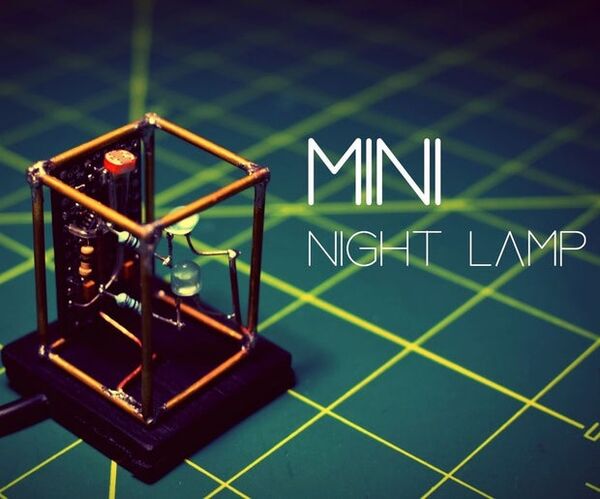
MINI Night Lamp
"this project is inspired by Mohit Boite. Electronics is a very big ocean and to explore it today I made a small lamp mini night lamp which is controlled by Arduino microcontroller. The concept is simple, all you need is an LDR ( light-sensitive diode), few LEDs, and a few resistors. oh! and also our brain the Arduino board. here I'm using the Arduino pro mini." [...]

Snake LED 16x16 matrix game
"Here is a classical arcade snake game. It's made on 16x16 led matrix. Hi there! I'm learning arduino opportunities. And I decided to copy classic arcade snake game from my old nokia. So, here it is." [...]
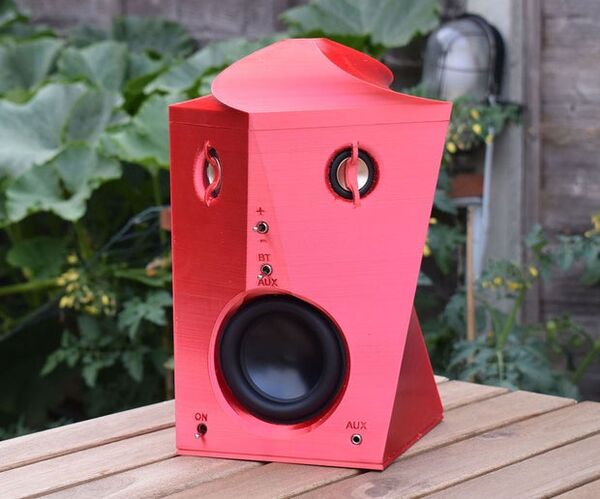
Mr. Speaker - 3D Printed DSP Portable Speaker
"My name is Simon Ashton and I have built many speakers over the years, usually from wood. I got a 3D printer last year and so I wanted to create something that exemplifies the unique freedom of design that 3D printing allows. I started playing with shapes and this is what popped out. Say hello to Mr. Speaker! He is: 3D Printed Stereo Battery powered Bluetooth Active DSP (flat response 45Hz - 20,000Hz and linear phase) PHOTO - Click Traditionally speakers need filter electronics to separate the signal for each driver and tune the sound. This can be a rather clumsy process involving large and expensive parts which nonetheless force the designer to choose many significant compromises." [...]
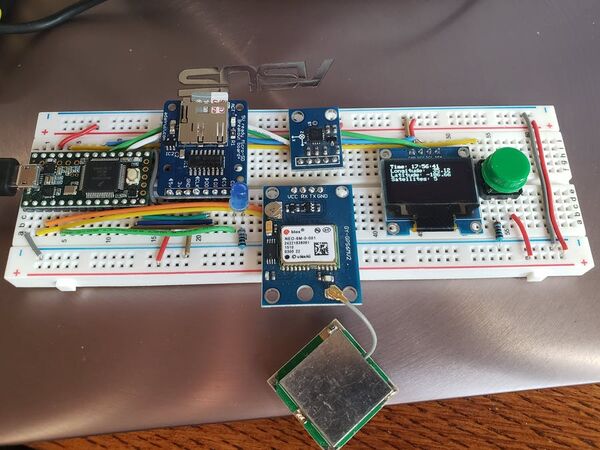
Automated Pothole Detection
"An accelerometer measure bumps/potholes. These are geo-tagged with a GPS-unit and saved to an uSD card. Visualization via Google Maps. I teach an Internet of Things workforce development bootcamp (http://deepdivecoding.com/iot) at Central New Mexico Community College. In 10-weeks, this intensive experience, takes individuals with little to no coding / electronics background an prepares them for a career in IoT. While my students were working on their Capstone projects for our inaugural IoT cohort, I was inspired by Smart City efforts being undertaken by the City of Albuquerque." [...]
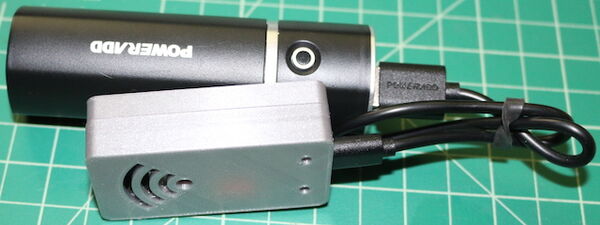
The No Phone Contact Tracer (NPCT) Project
"The goal of this work is to develop an open-source, anonymous, self-driven contract tracing hardware token that doesn't use a mobile phone at all. Say hello to the "NPCT" (no phone contact tracer) Project Participating in contact tracing(1)(2) is something each of us can do to help slow the spread of Covid-19. This work shows an inexpensive (~$20 USD) hardware-based contact tracer. This contact tracer does not use a mobile phone or an App at all. If you build this and carry this around, you can participate in self-driven contact tracing. It uses an ESP32 and Bluetooth Low Energy to 1) broadcast your health information and 2) log the same from those around you." [...]
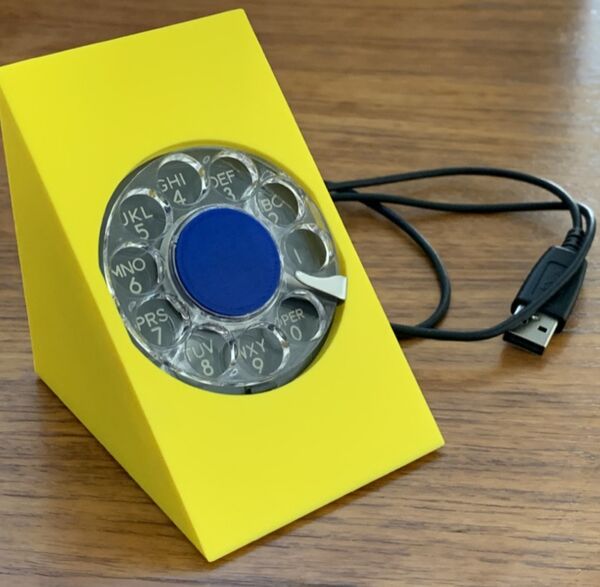
rotary_dialer
"Use old telephone rotary dial as a USB numeric keypad; includes 3-D printer files. Use an old AT&T Trimline rotary dialer as a numeric keypad for your computer. Disassemble the phone handset and extract the dialer. The 3-D files include a replacement for the center plug -- so you can change the colour. Uses a Teensy 3.x or Teensy LC to read the pulses. One pin of the teensy is set as a weak pullup (INPUT_PULLUP) and the program counts the number of (debounced) positive pulses, representing the number dialled." [...]
Pixel Smart Lamp
"This is a project I made for a smart lamp controled by Bluetooth with an Android App developed on Android Studio. Pixel's main goal is to display beatiful lights. It's fireplace lightmode, for example, let's you see how a single-pixel fireplace might look like. Also the rainbow mode shows how a lot of gradients are "naturally" formed by the leds. Pixel's eletronics are an Arduino Nano and 10 addressable LEDs ws2813. It also has a display showing the time, and a buzzer so you can set up an alarm." [...]
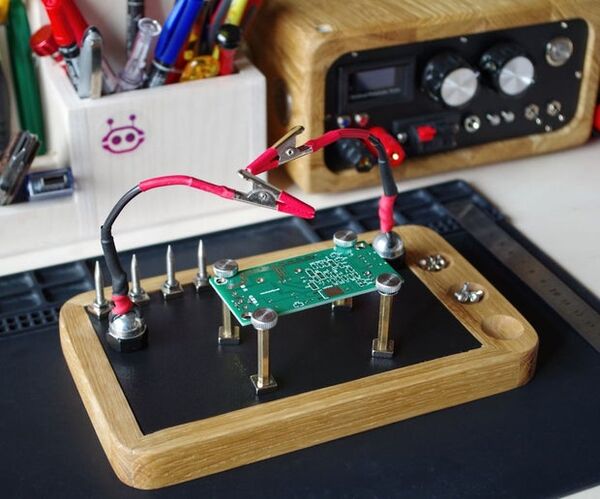
Magnetic Helping Hands Set for PCB and Electronics
"This type of magnetic helping(third) hand is extremely versatile and easily upgradable. It's really easy to add new clamps, posts, magnifying glass, led lamp or anything you need to it. My build contains only essentials, as i already have lighting, fume extractor and magnifyng glass. This build is in two parts. Firstly ell build easiest set with functionality in mind, later on I'll modify it to match my other tools style using oak, some paint etc. " [...]
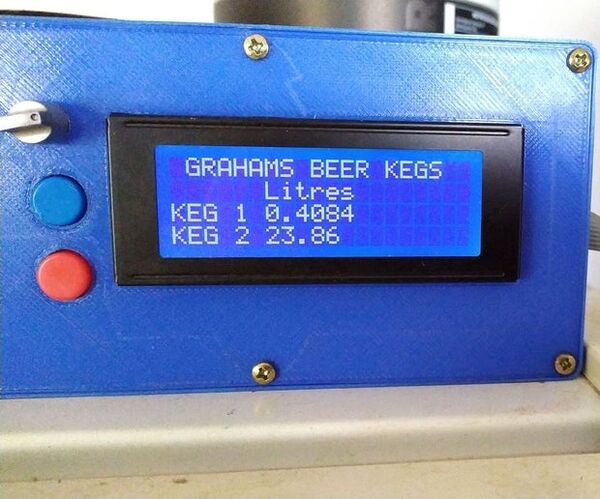
Beer Keg Scales
"I came back to Australia in 2016 after some years living in Thailand and I couldn't believe the price of a carton of beer, around $50. So I set up my own brewery again, this time using kegs instead of bottles. No secondary fermentation, no time-consuming washing and sterilizing bottles, and most importantly, no waiting for 3 weeks. I converted an old fridge for the purpose with 2 kegs each holding 23 liters and 2 taps on the door. I had a D size bottle of CO2 (from BOC) to carbonate the beer at the side of the fridge. This ran to a 2 way manifold to supply each keg separately." [...]
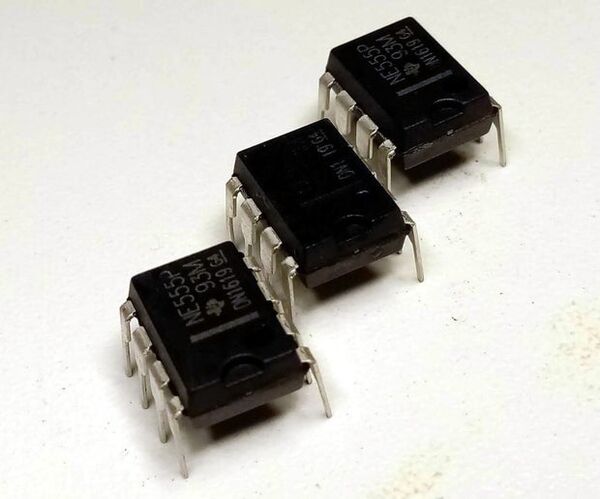
Point to Point Atari Punk Console One and a Half
"What!?? Another Atari Punk Console build? Wait wait wait people, this one is different, promise. Waaay back in 1982, Forrest Mims, Radio Shack booklet writer and Young Earth Creationist (roll eyes emoji) published the plans to his Stepped Tone Generator. It used two 555 timer chips (or one 556 dual timer chip). One of the timers was set up to be a free running oscillator, putting out a variable frequency square wave signal." [...]
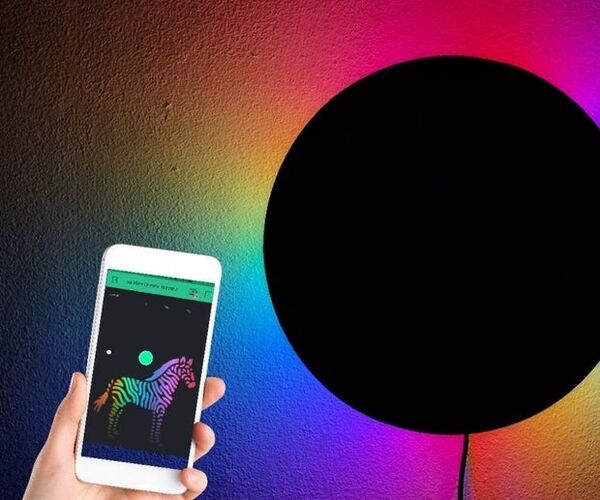
DIY Rainbow Eclipse Wall Light
"Hii Friends Today I'll Show You How To Make Simple DIY Eclipse Wall Light Using ESP8266 SO LET'S Make It I created this project after I was inspired by smartphone controlled neopixels in a friends house but his were shop-bought. I thought "how hard can it be to make my own, it would be much cheaper too!" Supplies: Hardware: Ws2812b RGB Led Strip Wires Software: Arduino IDE BLYNK App" [...]
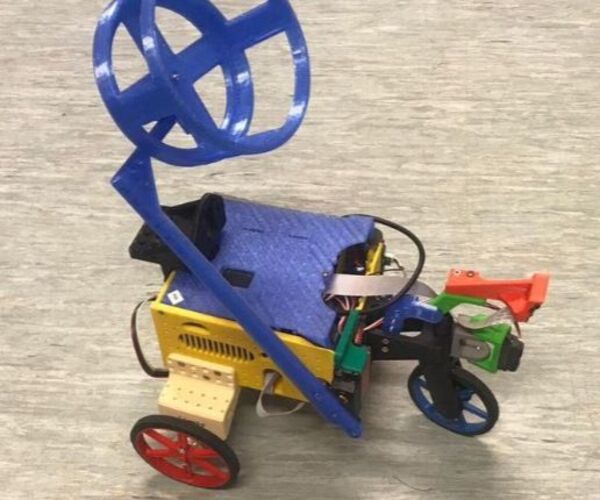
Autonomous Robot Performing Different Tasks
"In this project, a dedicated algorithm is made so that the robot can autonomously navigate the track as well as perform tasks such as line following, detecting an obstacle, grabbing and delivering an object. In addition, robustness is also considered it is because if robot navigate the pathway multiple times its performance will not affect. Components needed Raspberry Pi 3 GP2Y0A21 sharp distance sensor Edge sensor RPi camera JGB37-545 motor with encoder and 1:10 gearing (max 600RPM out) IMU Teensy 3.5 Some wires Audio amplifier Robot chassis" [...]
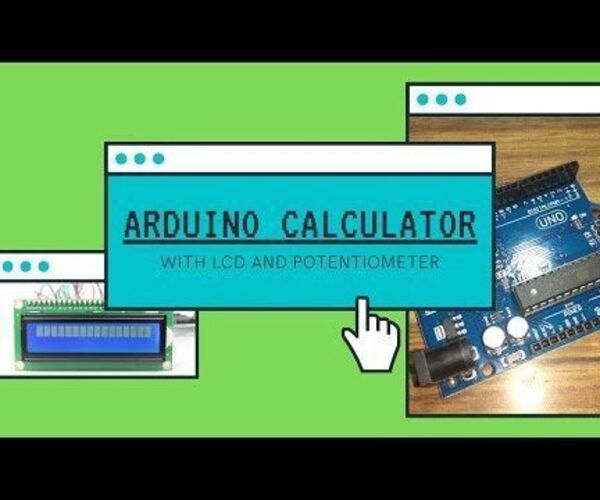
How to Make Arduino Calculator With LCD Display
"In this post, I tried to make an Arduino Calculator very easily using Arduino Uno R3. The values can be sent in through a keypad (44 keypad) and the result can be viewed on an LCD screen. This calculator could perform simple operations like Addition, Subtraction, Multiplication, and Division with whole numbers. But once you understand the concept you can implement even scientific functions with Arduinos built-in functions. Supplies: Arduino Uno R3 Numpad attachment Potentiometer LCD Display Jumper Wires Power Supply" [...]

ESP-O-One : Making Your Own ESP Development Board!
"Hey everyone! welcome to my instructable where I will show you how I made this ESP8266 01 development board which I like to call ESP-O-ONE.Since I started working with electronics and specially with the ESP boards have always found the ESP8266 01 Board highly underrated but with full of features and capabilities. So I went ahead and made all in one development board which contains an inbuilt programmer and access to GPIO pins of the ESP board along with programming and reset functionalities. With this board you can connect modules which support I2C communication such as OLED displays,accelerometers,temperature sensors,modules with one wire communication protocol and much more. The GPIO pins of the ESP can also be used as a digital input output interface to connect simple digital logic elements like LEDs, push buttons etc. This is going to be a fun instructable so let's get started!" [...]

Ultracapacitor Powered Robot
"Little Flash is a 3d printed robot powered by ultracapacitors. To prevent getting stuck, she uses a bump switch and random path adjustments. She runs for 25 minutes and can be charged in about 40 seconds using a 10 amp constant current power supply. Supplies: (2) Metal Gear "no stop" servo motors (2) Vacuum cleaner belts (3) 350 farad capacitors (1) Roller switch (1) On/off switch (1) Arduino Uno (1) Arduino Motor Shield (1) DC to DC converter (1) Cable set with a male and female connector (1) 10 amp constant current bench type power supply" [...]

"Space Impact" Game With Gyro Sensor and Nokia 5110 LCD
"After my Tamagotchi died (last project), I started searching for a new way to waste my time. I decided to program the classic game Space Impact on the Arduino. To make the game a bit more interesting and fun, I used a gyroscope sensor I had lying around as the control of the spaceship. " [...]
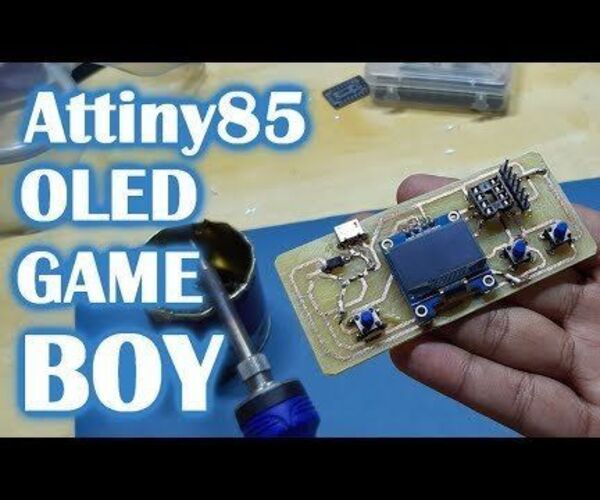
Just Another ATtiny85 Retro Gaming Console
"A small retro Console-like setup based around ATtiny85 x 0.96 OLED for playing space invaders, Tetris, etc. Supplies: Oled 0.96inch x 1 Attiny85 x1 Programmer setup for Programming Attiny85 x 1 Switch x 3 10K Resistor SMD 0805 x 2 1K Resistor SMD 0603 x 2 LED 0603 x 1 M7 diode SMA x 1 USB micro port x 1 7K Resistor SMD 0603 x 1 Custom PCB (Gerber Data is attached) FR4 copper board etched PCB (PDF is attached)" [...]
That's all Folks!



